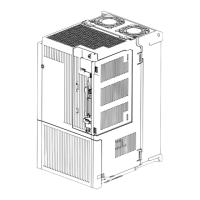What causes undervoltage on Mitsubishi MR-J4-350A?
- MmarksheltonAug 27, 2025
Undervoltage in your Mitsubishi Amplifier can be due to: * Voltage drop in the control circuit power. * Voltage drop in the main circuit power.

What causes undervoltage on Mitsubishi MR-J4-350A?
Undervoltage in your Mitsubishi Amplifier can be due to: * Voltage drop in the control circuit power. * Voltage drop in the main circuit power.
Why is my Mitsubishi MR-J4-350A Amplifier showing a servo motor overheat error?
A servo motor overheat error in your Mitsubishi Amplifier can be due to: * Abnormal temperature of servo motor 1. * Abnormal temperature of servo motor 2. * Thermistor disconnected error. * Abnormal temperature of servo motor 3. * Abnormal temperature of servo motor 4.
What causes a main circuit error in my Mitsubishi MR-J4-350A Amplifier?
A main circuit error in your Mitsubishi Amplifier can occur due to: * A ground fault detected by the hardware detection circuit. * A ground fault detected by the software detection function.
What causes an overspeed error on a Mitsubishi MR-J4-350A Amplifier?
An overspeed error on your Mitsubishi Amplifier is caused by abnormal motor speed.
| Series | MR-J4 |
|---|---|
| Type | Servo Amplifier |
| Rated Output Power | 3.5 kW |
| Position Control | Yes |
| Speed Control | Yes |
| Torque Control | Yes |
| Full-closed control | Yes |
| Advanced One-touch Tuning | Yes |
| STO | Yes |
| SS1 | Yes |
| Voltage Class | 200 V |
| Communication Interface | SSCNET III/H |
| Protection Functions | Overcurrent, Overvoltage, Overheat |
| Ambient Temperature | 0 °C to +55 °C |
| Vibration Resistance | 5.9 m/s² |
Defines hazard levels for safety instructions and precautions.
Defines hazard levels for safety instructions and precautions.
Emphasizes secure grounding of the servo amplifier and motor to prevent electric shock.
Stresses installing equipment on incombustible material to prevent fire hazards.
Details the connection requirements for the main and control circuit power supplies.
Illustrates typical I/O signal connections for various control modes.
Provides detailed descriptions of various input and output signals.
Details proper grounding procedures for safety and noise reduction.
Outlines the procedure for initial power-on and startup.
Provides specific startup steps for position control mode.
Provides specific startup steps for speed control mode.
Provides specific startup steps for torque control mode.
Lists all basic and extension parameters with their functions and settings.
Details fundamental parameters for configuring the servo amplifier's operation.
Details parameters for setting servo amplifier gains and filters.
Explains various methods for adjusting servo amplifier gains.
Describes the automated gain adjustment process via software or push buttons.
Details the real-time auto tuning function for optimizing servo gains.
Explains manual gain adjustment using specific parameters for fine-tuning.
Covers various filters for suppressing machine vibration and noise.
Details notch filters to suppress mechanical resonance at specific frequencies.
Describes the automatic detection and setting of filters to suppress machine vibration.
Explains how to switch servo gains based on operating conditions or input signals.
Provides examples and procedures for setting up gain switching.












